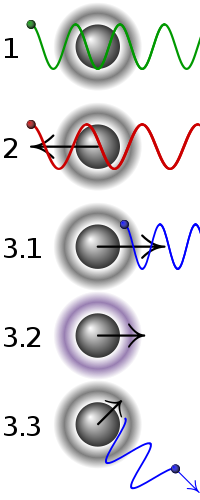
Photo from wikipedia
The Al ion optical clock is a very promising optical frequency standard candidate due to its extremely small black-body radiation shift. It has been successfully demonstrated with the indirect cooled,… Click to show full abstract
The Al ion optical clock is a very promising optical frequency standard candidate due to its extremely small black-body radiation shift. It has been successfully demonstrated with the indirect cooled, quantum-logic-based spectroscopy technique. Its accuracy is limited by second-order Doppler shift, and its stability is limited by the number of ions that can be probed in quantum logic processing. We propose a direct laser cooling scheme of Al ion optical clocks where both the stability and accuracy of the clocks are greatly improved. In the proposed scheme, two Al traps are utilized. The first trap is used to trap a large number of Al ions to improve the stability of the clock laser, while the second trap is used to trap a single Al ion to provide the ultimate accuracy. Both traps are cooled with a continuous wave 167 nm laser. The expected clock laser stability can reach . For the second trap, in addition to 167 nm laser Doppler cooling, a second stage pulsed 234 nm two-photon cooling laser is utilized to further improve the accuracy of the clock laser. The total systematic uncertainty can be reduced to about . The proposed Al ion optical clock has the potential to become the most accurate and stable optical clock.
Journal Title: Chinese Physics Letters
Year Published: 2017
Link to full text (if available)
Share on Social Media: Sign Up to like & get
recommendations!